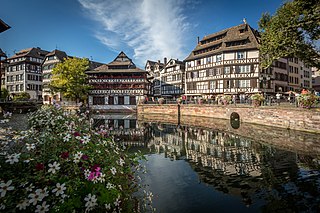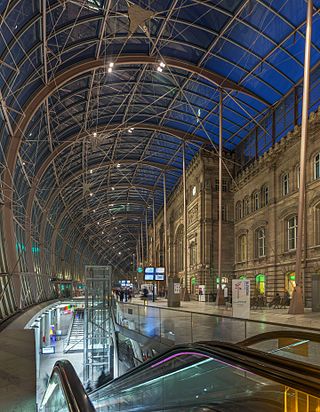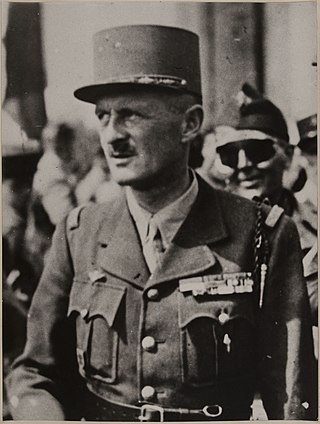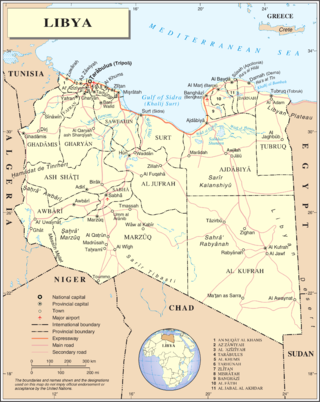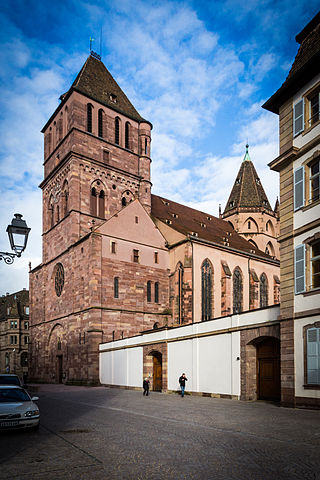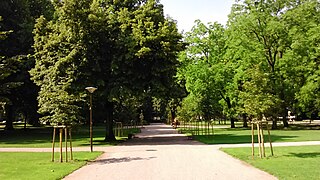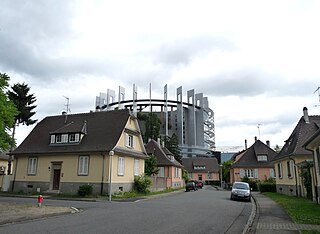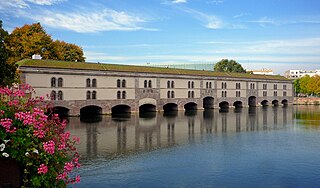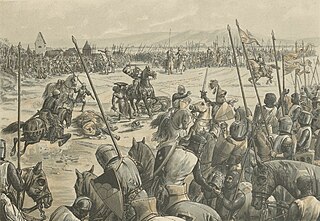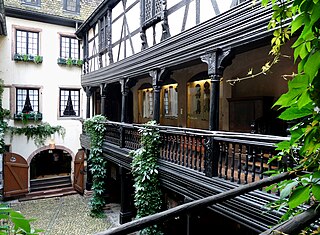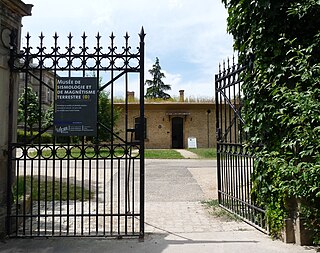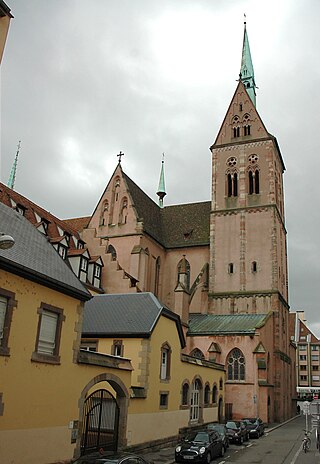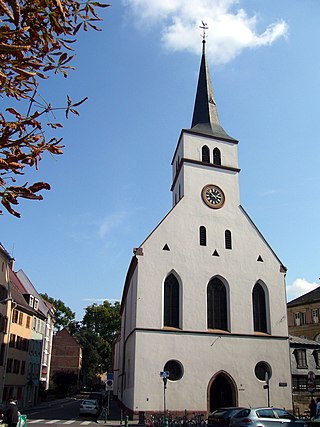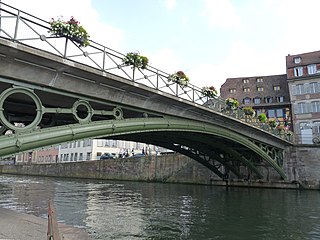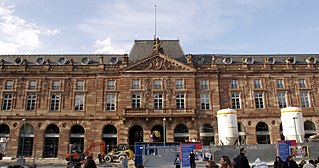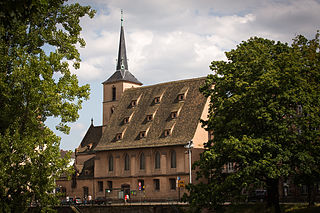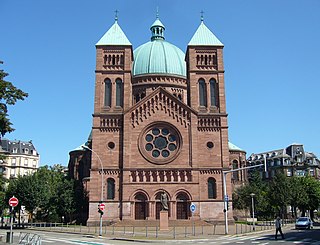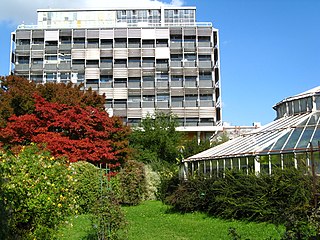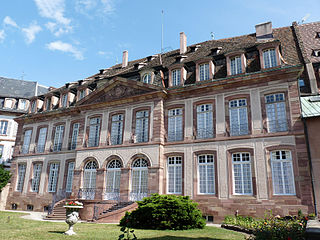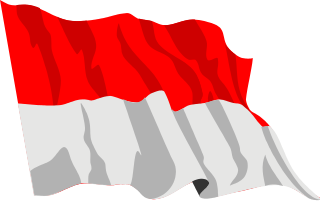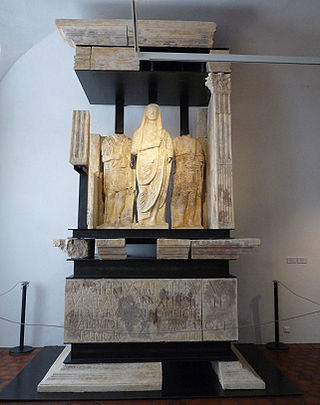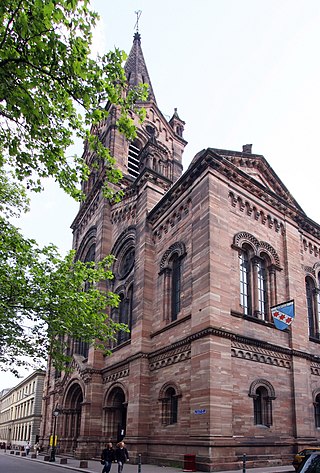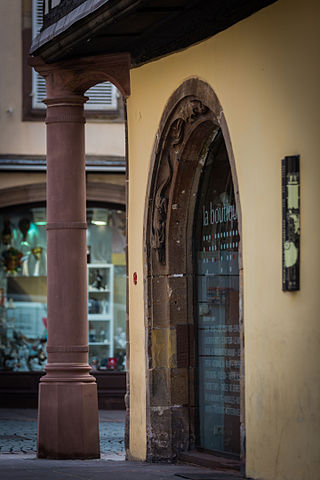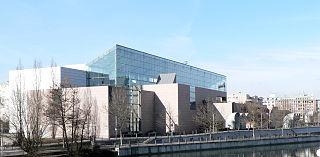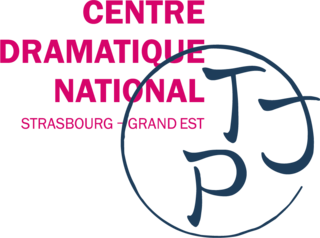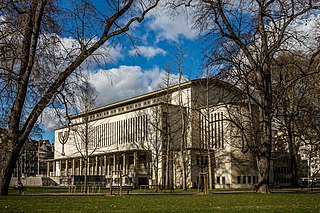41 Sights in Strasbourg, France (with Map and Images)
Legend
Premium Sights
Book tickets, guided tours and activities in Strasbourg.
Guided Free Walking Tours
Book free guided walking tours in Strasbourg.
Welcome to your journey through the most beautiful sights in Strasbourg, France! Whether you want to discover the city's historical treasures or experience its modern highlights, you'll find everything your heart desires here. Be inspired by our selection and plan your unforgettable adventure in Strasbourg. Dive into the diversity of this fascinating city and discover everything it has to offer.
Sightseeing Tours in StrasbourgActivities in Strasbourg1. Palais Rohan
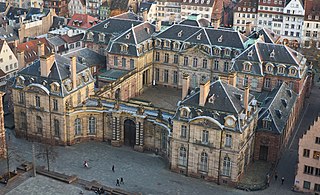
The Palais Rohan in Strasbourg is the former residence of the prince-bishops and cardinals of the House of Rohan, an ancient French noble family originally from Brittany. It is a major architectural, historical, and cultural landmark in the city. It was built next to Strasbourg Cathedral in the 1730s, from designs by Robert de Cotte, and is considered a masterpiece of French Baroque architecture. Since its completion in 1742, the palace has hosted a number of French monarchs such as Louis XV, Marie Antoinette, Napoleon and Joséphine, and Charles X.
2. La Petite France
La Petite France, in Alsatian dialect: Französel is the south-western part of the Grande Île of Strasbourg in Alsace in eastern France, the most central and characteristic island of the city that forms the historic center. The district is bounded to the north by the Quai de la Bruche (Brischstade), the Rue du Bain-aux-Plantes, the Place Benjamin-Zix and the Rue des Dentelles; to the east by the Rue du Pont-Saint-Martin, the Pont Saint-Thomas and the Mills footbridge; to the south by the Channel of Zorn-Mühle; to the west by the Covered Bridges.
3. Grande Île
The Grande Île is an island that lies at the historic centre of the city of Strasbourg in France. Its name means "Large Island", and derives from the fact that it is surrounded on one side by the main channel of the Ill river and on the other side by the Canal du Faux-Rempart, a canalised arm of that river. The Grande Île was named a UNESCO World Heritage Site in 1988. At the time, the International Council on Monuments and Sites noted that the Grande Île is "an old quarter that exemplifies medieval cities". Strasbourg was the first city to have its entire city center be listed as a World Heritage Site.
4. Strasbourg
Strasbourg-Ville station is the main railway station in the city of Strasbourg, Bas-Rhin, France. It is the eastern terminus of the Paris-Est–Strasbourg-Ville railway. The current core building, an example of historicist architecture of the Wilhelminian period, replaced a previous station inaugurated in 1852, later turned into a covered market and ultimately demolished. With nearly 24 million passengers in 2023, Strasbourg-Ville is one of the busiest railway stations in France outside of the Île-de-France.
5. Général Leclerc
Philippe François Marie Leclerc de Hauteclocque was a Free-French general during World War II. He became Marshal of France posthumously in 1952, and is known in France simply as le maréchal Leclerc or just Leclerc.
6. Borne du Serment de Koufra
The Capture of Kufra was part of the Allied Western Desert Campaign during the Second World War. Kufra is a group of oases in the Kufra District of south-eastern Cyrenaica in the Libyan Desert. In 1940, it was part of the colony of Italian Libya Libia Italiana, which was part of Africa Settentrionale Italiana (ASI), which had been established in 1934. With some early assistance from the British Long Range Desert Group, Kufra was besieged from 31 January to 1 March 1941 by Free French forces which forced the surrender of the Italian and Libyan garrison.
7. Église protestante Saint-Thomas
St Thomas' Church is a historic building in Strasbourg, eastern France. It is the main Lutheran church of the city since its cathedral became Catholic again after the annexation of the town by France in 1681. It is nicknamed the "Protestant Cathedral" or the Old Lady, and the only example of a hall church in the Alsace region. The building is located on the Route Romane d'Alsace. It is classified as a Monument historique by the French Ministry of Culture since 1862. Its congregation forms part of the Protestant Church of Augsburg Confession of Alsace and Lorraine.
8. Parc Contades
The Parc du Contades is a public park in the city of Strasbourg. Located in the Neustadt, it was created in 1764 by Marshal Louis Georges Erasmus de Contades on the site of a former shooting range ("Schiessrain").
9. Stèle commémorative Cité-jardin Ungemach
The Ungemach garden city is a garden city created in the early 1920s and located in the Wacken district, north of Strasbourg. A few decades later, over the years, the establishment of buildings linked to the European institutions, including the European Parliament, was carried out on the edge of this set of 140 pavilions, pink or straw in colour, surrounded by gardens.
10. Vauban Dam
The Barrage Vauban, or Vauban Dam, is a bridge, weir and defensive work erected in the 17th century on the River Ill in the city of Strasbourg in France. At that time, it was known as the Great Lock, although it does not function as a navigation lock in the modern sense of the word. Today it serves to display sculptures and has a viewing terrace on its roof, with views of the earlier Ponts Couverts bridges and Petite France quarter. It has been classified as a Monument historique since 1971.
11. Anciennes glacières de Strasbourg
The former ice houses of Strasbourg are a group of buildings located on the canals of the Ill in the Petite France district. From 1897 to 1990, the buildings housed an artificial refrigeration plant with machines from the company Quiri, which became Axima Refrigeration France. They have now been converted into a five-star hotel: Le Régent Petite France. Several industrial facilities were preserved as part of the hotel development project and were registered in 1991 on the supplementary inventory of historic monuments, according to the terms of the decree: "as an in situ protective envelope of an inseparable technical ensemble". All the machines and their annexes, for their part, are protected by a Classification as Historic Monuments.
12. Musée de l'Œuvre Notre-Dame
The Musée de l'Œuvre Notre-Dame is the city of Strasbourg's museum for Upper Rhenish fine arts and decorative arts, dating from the early Middle Ages until 1681. The museum is famous for its collection of original sculptures, glass windows, architectural fragments, as well as the building plans of Strasbourg Cathedral. It has a considerable collection of works by Peter Hemmel von Andlau, Niclas Gerhaert van Leyden, Nikolaus Hagenauer, Ivo Strigel, Konrad Witz, Hans Baldung and Sebastian Stoskopff.
13. Chevalier Liebenzeller
The Battle of Hausbergen was a historic military engagement that took place in the Alsace region of northeastern France on 8 March 1262. The battle marked the release of the 'burghers' (citizens) of Strasbourg from episcopal authority and gave the bourgeoisie control over politics and commerce. The battle occurred on the fields of Hausbergen, an area of countryside a few miles northwest of the city of Strasbourg. It resulted in the decisive victory of the townsmen over the forces of the Bishop of Strasbourg, Walter of Geroldseck and the granting of free imperial city status by King Philip of Swabia to Strasbourg.
14. Musée Alsacien
The Musée alsacien is a museum in Strasbourg in the Bas-Rhin department of France. It opened on 11 May 1907, and is dedicated to all aspects of daily life in pre-industrial and early industrial Alsace. It contains over 5000 exhibits and is notable for the reconstruction of the interiors of several traditional houses. It also features a rich collection of artifacts documenting the everyday life of Alsatian Jews.
15. Église catholique Sainte-Madeleine
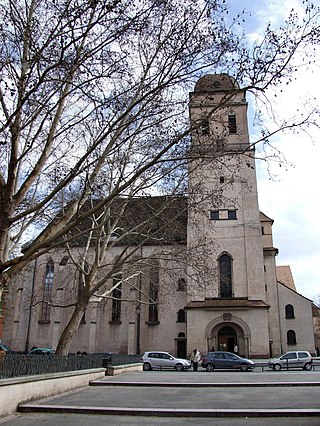
The Sainte-Madeleine Church is a Catholic church in Strasbourg, France, which was built in Gothic style in the late 15th century, but largely rebuilt in a style close to Jugendstil after a devastating fire in 1904. Destroyed again during World War II, the church was re-constructed in its modern form.
16. Musée de Sismologie et de Magnétisme Terrestre
The Museum of Seismology and Terrestrial Magnetism is a museum in Strasbourg, located on the historic campus opposite the botanical garden of the University of Strasbourg. It depends on the School and Observatory of Earth Sciences (EOST), which is a component of the University of Strasbourg. The museum presents an important collection of instruments for measuring seismology and recording the Earth's magnetic field as well as their evolution over the years. They are on display in the former seismological station in Strasbourg.
Wikipedia: Musée de sismologie et de magnétisme terrestre (FR), Website
17. Église protestante Saint-Pierre-le-Jeune
The Saint-Pierre-le-Jeune Protestant Church is one of the most important church buildings of the city of Strasbourg, France, from the art historical and architectural viewpoints. It got its name, "Young St. Peter's", because of the existence of three other St. Peter's churches in the same city: Saint-Pierre-le-Vieux, divided into a Catholic and a Lutheran church, and Saint-Pierre-le-Jeune catholique, a massive neo-Romanesque domed church from the late 19th century.
18. Église Saint-Guillaume
Saint William's Church is a Gothic church presently of the Lutheran Protestant Church of Augsburg Confession of Alsace and Lorraine located in Strasbourg, France. Slightly set back from the intersection of the wharfs of the shipbuilders and the fishermen, the church is striking for its picturesque location on the bank of the Ill river, the lopsided character of its exterior, and its sumptuous interior combining the Gothic and Baroque styles.
19. Église protestante Sainte-Aurélie
The Church of Saint Aurelia, situated in the west of Strasbourg near the railway station, is one of the Strasbourg churches with the longest history. A Lutheran church since the Reformation, the church is of particular historical and architectural interest.
20. Pont Saint-Nicolas
The Saint-Thomas Bridge is a metal arch bridge that crosses the Ill in the Finkwiller district of Strasbourg (Bas-Rhin). This cast-iron structure was built in 1841 by the brothers of Dietrich de Reichshoffen, under the direction of Nicolas Cadiat, according to the plans of the engineer Antoine-Rémy Polonceau, designer of the Carrousel bridge in Paris in the 1830s. It is one of the oldest preserved cast iron bridges in France.
21. Aubette
L’Aubette is a historical building on Place Kléber in Strasbourg, France. It was built by Jacques-François Blondel in 1765–1772. In 1926, three avant-garde artists Theo van Doesburg, Sophie Taeuber-Arp and Jean Arp were commissioned by Paul and Adré Horn to redecorate and design the Café Aubette in Strasbourg. The three artists were equally responsible for different sections of the building; Theo van Doesburg was in charge of the two cafés and two dance halls, Sophie Taeuber for the entrance aisle, tearoom, and two bars, and Jean Arp for the basement, the passage, and billiard room. And all three artists worked together designing the stairwell. The work of the three artists had been called "the Sistine Chapel of abstract art". This historical building still opens as a historical landmark nowadays.
22. Hôtel de la Préfecture
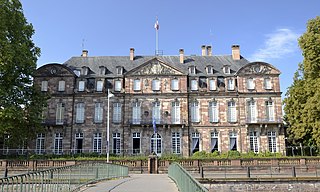
The Hôtel de Klinglin, currently known as the Hôtel du Préfet, is a historic building located near Place Broglie on the Grande Île in the city center of Strasbourg, in the French department of the Bas-Rhin. It has been classified as a Monument historique since 1970.
23. Saint-Nicolas' Church
Saint Nicholas Church, Strasbourg is a small Gothic church in Strasbourg, France. Jean Calvin led services and preached at this church in 1538. Albert Schweitzer was the pastor of the church from 1900 to 1913 and used to play the organ there.
24. Église catholique Saint-Pierre-le-Jeune
Saint-Pierre-le-Jeune Catholic Church is a late 19th-century Catholic church dedicated to Saint Peter in Strasbourg, France. It is not to be confused with the medieval Saint-Pierre-le-Jeune Protestant Church in the same city.
25. Jardin Botanique
The Jardin Botanique de l'Université de Strasbourg, also known as the Jardin botanique de Strasbourg and the Jardin botanique de l'Université Louis Pasteur, is a botanical garden and arboretum located at 28 rue Goethe, Strasbourg, Bas-Rhin, Alsace, France. It is open daily without charge.
Wikipedia: Jardin botanique de l'Université de Strasbourg (EN)
26. Opéra du Rhin
The Strasbourg Opera House, located on Place Broglie on the Grande Île in the city center of Strasbourg, in the French department of the Bas-Rhin, is the main seat and mother house of the opera company Opéra national du Rhin. It has been classified as a Monument historique since 1921.
27. Musée Historique
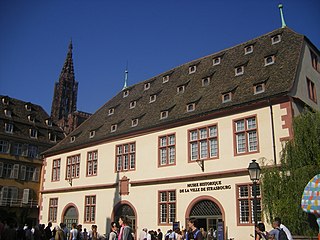
The Musée historique is a museum in Strasbourg in the Bas-Rhin department of France. It is located in the Renaissance building of the former slaughterhouse and is dedicated to the tumultuous history of the city from the early Middle Ages until the contemporary period.
28. Palais épiscopal
The Episcopal Palace, formerly known as the Hôtel du grand Doyenné, is the seat of the Archdiocese of Strasbourg. A French Baroque hôtel particulier of the 1720s, it is located between Rue du Parchemin and Rue Brûlée, near Place Broglie, on Grande Île, the historic city center of Strasbourg, in the French department of the Bas-Rhin, Alsace. It has been classified as a monument historique since 1929.
29. Union des Églises protestantes d'Alsace et de Lorraine
The Union of Protestant Churches of Alsace and Lorraine was created in 2006 by bringing together the Protestant Church of Augsburg Confession of Alsace and Lorraine (EPCAAL) and the Protestant Reformed Church of Alsace and Lorraine (EPRAL).
Wikipedia: Union of Protestant Churches of Alsace and Lorraine (EN)
30. Musée archéologique
The Musée archéologique of Strasbourg, France is the largest of the numerous Alsacian museums displaying regional archeological findings from Prehistory to the Merovingian dynasty. It is located in the basement of the Palais Rohan.
31. Temple Neuf
The Temple Neuf in Strasbourg is a Lutheran church built on the site of the former Dominican convent where Meister Eckhart studied. The Temple was constructed at the end of the 19th century after the old Dominican Church was destroyed during the Siege of Strasbourg on the night of 24-25 August 1870, during the Franco-Prussian War. The ensuing fire also destroyed the libraries of the University of Strasbourg and the City of Strasbourg which were located at the Temple Neuf site.
32. Büchmesser
The Büchmesser, "belly measurer", is a sandstone column dating from 1567 located at the corner of 11 rue Mercière and the square in front of the Notre-Dame de Strasbourg cathedral, on which rests the corbelling of the former Stag pharmacy, the oldest parts of which date back to the fifteenth century. The Büchmesser has been classified as a historical monument since 1936.
33. Ancienne douane
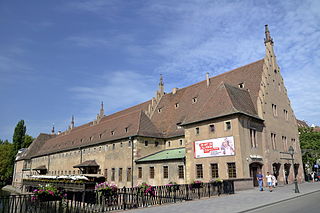
Ancienne Douane is a 14th-century building on the Grande Île, the historic city centre of Strasbourg, France. The structure is classified as a Monument historique by the French Ministry of Culture since 1948.
34. Église Saint-Maurice
St Maurice's Church is a Roman Catholic church building located on Place Arnold in the Neustadt district of Strasbourg, France. It was built during the Annexation of Alsace-Lorraine into the German Empire in the late 19th century.
35. Villa Bowé
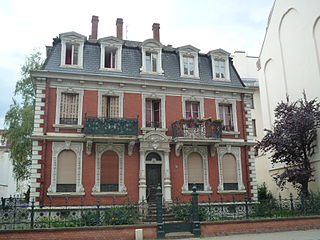
The Route du Polygone is a thoroughfare in the city of Strasbourg. It is one of the major urban arteries of the Neudorf district and the south of the city of Strasbourg in general, as well as the main shopping street of the Neudorf district.
36. Musée d'Art Moderne et Contemporain
The Museum of Modern and Contemporary Art of Strasbourg (MAMCS) was inaugurated by Catherine Trautmann, then Minister of Culture and former mayor of Strasbourg, in December 1998. It was built by the architect Adrien Fainsilber on the left bank of the Ill, opposite the headquarters of the European Collectivity of Alsace and near the Vauban dam and the picturesque district of Petite France. The Place Jean-Arp, on which the museum opens, also houses the northern part of the National Institute of Public Service, located in the former Saint-Jean commandery.
Wikipedia: Musée d'art moderne et contemporain (Strasbourg) (FR), Website
37. Musée des arts décoratifs

The Museum of Decorative Arts in Strasbourg is a museum dedicated to the decorative arts, located on the ground floor of the former residence of the prince-bishops of the Alsatian metropolis, the Palais Rohan.
Wikipedia: Musée des arts décoratifs de Strasbourg (FR), Website
38. TJP Centre Dramatique National d'Alsace
The TJP National Dramatic Center of Strasbourg Grand Est is a French theater of associative status created in 1974 in the city of Strasbourg by the actor and director André Pomarat, from the first promotion of the Higher School of Dramatic Art Strasbourg. In 1990, the establishment obtained the National Dramatic Center label (CDN). Following André Pomarat, he was led by puppeteers Grégoire Callies from 1997 to 2012 and Renaud Herbin from 2012 to 2022. The dancer and choreographer of Japanese origin Kaori Ito takes the direction from January 1, 2023. TJP is currently located on two sites in the city center, the small stage in the Petite France district and the large stage in the Kruntenau district. Its programming is distinguished by its address to all generations, with shows accessible from early childhood but also a program intended for an exclusively adult audience, and by multidisciplinary artistic forms around the puppet arts, the theater of objects, Shadow theater, dance, circus and visual arts. Since 1977, the CDN has organized the Les Giboulée festival which takes place in March in many rooms in the territory of the Eurometropolis of Strasbourg and presents dozens of proposals exploring these theatrical genres.
39. Faculté de Droit
The Faculty of Law, Political Science and Management of Strasbourg is the Faculty of Law of the University of Strasbourg, which was part of the Robert-Schuman University before the merger of the Strasbourg universities. It is located on the central campus.
Wikipedia: Faculté de droit, sciences politiques et gestion de Strasbourg (FR)
40. Synagogue de la Paix
The Great Synagogue of Peace is a Jewish consistorial religious and cultural building that also houses a community center, headquarters of the Jewish community of Strasbourg, and the chief rabbinate of the Bas-Rhin.
Wikipedia: Grande synagogue de la Paix (Strasbourg 1958) (FR)
41. Musée Tomi Ungerer Centre International de l'Illustration
The Tomi-Ungerer Museum – International Centre for Illustration, located in Strasbourg, brings together a large collection of drawings, archives, toys and magazines donated to his hometown by the French artist Tomi Ungerer (1931-2019).
Share
Disclaimer Please be aware of your surroundings and do not enter private property. We are not liable for any damages that occur during the tours.
